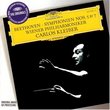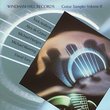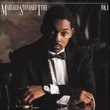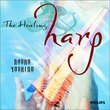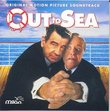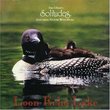| All Artists: Franz [Vienna] Schubert, Grumiaux Trio, Beaux Arts Trio, Menahem Pressler Title: Schubert: Complete Trios Members Wishing: 1 Total Copies: 0 Label: Philips Release Date: 1/18/1994 Genre: Classical Style: Chamber Music Number of Discs: 2 SwapaCD Credits: 2 UPC: 028943870023 |
Search - Franz [Vienna] Schubert, Grumiaux Trio, Beaux Arts Trio :: Schubert: Complete Trios
 | Franz [Vienna] Schubert, Grumiaux Trio, Beaux Arts Trio Schubert: Complete Trios Genre: Classical
Schubert's two piano trios are the products of his last years when, knowing that he was ill and dying, he still managed to produce dozens of songs and chamber music masterpieces, as well as pursue counterpoint studies and ... more » |
Larger Image |
CD DetailsSynopsis
Amazon.com Schubert's two piano trios are the products of his last years when, knowing that he was ill and dying, he still managed to produce dozens of songs and chamber music masterpieces, as well as pursue counterpoint studies and make plans for further orchestral and stage works. Add to this the earlier String Trio and a couple of miscellaneous single movements, and his output in "trio" form is complete. Both of the piano trios are typically large works, generously stuffed with first-rate tunes, some of which you may recognize without knowing exactly where they came from. These excellent performances at a "twofer" price offer the most convenient and cost effective way to get to know this marvelous music. --David Hurwitz Similarly Requested CDs
|
CD ReviewsOne Schubert CD YOU Should Get stradgirl | Toronto, ON | 04/23/2001 (5 out of 5 stars) "There just doesn't seem to be quite the equal for their interpretations of the classical repertoire, but even among the numerous remarkable recordings the Beaux Arts Trio has produced, this gorgeous rendering of Schubert decisively stands out. Trio No.1 in B flat Major is my favourite pick, with all of its very expansive movements (length-wise, rather than musically, which often make the piece sound boring in lesser hands) treated with extremely delicate and tasteful pacings. One more thing that is very noticeable is the lyricism of the cello tone that almost resembles that of a human voice; it is so light and transparent, as perfectly exhibited in the second movement of the Trio No.1, that at times it could be mistaken for violin. This is one Schubert recording you should not miss, and I actually think I like this more than the overplayed (although very much deservedly) Trout Quintet. Enjoy!" Good, but too "intellectualized" Bahij Bawarshi | 08/20/2002 (4 out of 5 stars) "This is an excellent CD to have; the Beaux Arts Trio is excellent, but sometimes their interpretation is too intellectual and doesn't care enough for the beauty of Schubert's melodies. For example, in the second movement of Schubert E flat Piano trio, the gorgeous solo, the accompaniment to the gorgeous cello solo, then piano solo, is staccato, which takes much of the beauty out of this gorgeous section. I could picture the three guys sitting there and saying, "The melody line is long, so we should make the accompaniment short." When this melody recurs in the fourth movement, it's played much much much too quickly, again taking the beauty, the melancholy out of it. It's clear in those gorgeous waterfall-like descending chords on the piano that Pressler is racing and shouldn't be. After the solo in the second movement, the violin gets too staccato and makes part of the piece unbearably corny, particularly during the fortissimo parts. The B flat in particular tends to race. However, the playing is still very expressive; Pressler in particular and Greenhouse next. I reccomend this CD very highly." A Hidden Gem Worth Taking Without Hesitation! Octavius | United States | 10/20/2005 (5 out of 5 stars) "The Grumiaux Trio and the Beaux Arts trio are highly respected groups in the domain of chamber music and rank as highly as groups such as the Guarneri Quartet. These earlier performances of Schubert are exquisite in their execution and the only defect here is perhaps a slightly reduced sound quality than your typical contemporary performances due to its age. This is barely noticeable however and this CD is really a steal for the price.
The trios of Schubert are a good way of exploring various periods of his life in which he composed drastically different arrangements. His Piano Trio D. 28 is a good example of his foundations in Mozart and early Beethoven until you reach his Piano Trio D. 929 (performed often in Kurbrick's 'Barry Lyndon') where Schubert explores much more on impressionistic themes than romantic ones. Such themes were only pursued later by composers such as Brahms and Schumann. Liszt's romanticism was also stongly influenced by both Beethoven and Schubert. Of the performances I really have nothing to say as they are simply flawless and there are few I could compare. The sound has some disadvantages but not really significant ones. This is really a magnificent performance giving you Schubert's complete trios on two CDs. For the quality of performance you get it's a bargain. I am glad I got it as it was worth every dollar." |

 Track Listings (9) - Disc #1
Track Listings (9) - Disc #1